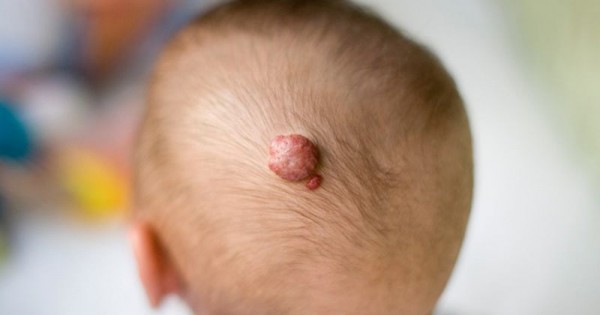Vascular anomaly is one of the commonly found birthmarks. The classification of vascular anomalies is under debate as there is a large variety of clinical features and nomenclature used. The International Society for the Study of Vascular Anomalies (ISSVA) divides vascular anomalies into neoplasms and malformations. Neoplasm vascular anomaly is divided into several disorders which one of them is hemangioma. According to the ISSVA classification, hemangiomas are classified into infantile hemangiomas (IH) and congenital hemangiomas. Infantile hemangioma (IH) is the most common type of hemangioma.
IH is a benign tumor and is often found in newborns. The prevalence is estimated to be 2-3% in infants. About 10% of the case is found in babies aged less than one year, and around 22-30% of the case is found in babies born with bodyweight
Most IH cases can be cured immediately. Various treatment options, both topical and systemic, are available depending on the symptoms and severity. The prognosis of IH is determined by the number of lesions, location, speed of growth and accuracy of diagnosis, and appropriate treatment. Thus, early recognition of symptoms, diagnosis, and therapy play an important role in determining the prognosis of this condition.
This is a retrospective descriptive study of medical records of new IH patients in the Pediatric Dermatology Division of the Dermatology & Venereology Department outpatient clinic of Dr. Soetomo General Hospital Surabaya from 2008 to 2017 (10 years). The data were recorded in the form of a total of new patient visits, general descriptions of the patient, including age, sex, clinical data, and IH management.
Between 2008 and 2017, there were 84 IH patients, and they made up 0.69% of the total patients of the Pediatric Dermatology Division of the Dermatology & Venereology Department outpatient clinic of Dr. Soetomo General Hospital Surabaya. The number of new infantile hemangioma patients tends to decrease from year to year. The decrease in number was in line with the decrease in the number of new patient visits both in the Pediatric Dermatology Division and in all divisions of the Dermatology & Venereology Department outpatient clinic of Dr. Soetomo General Hospital Surabaya in the same period.
The most common age group of IH patients was 0-1 year old, with 60 patients (71.43%). The prevalence of infantile hemangiomas is often found at less than 1 year of age. This condition occurs in the first few weeks of birth and will develop actively until spontaneous involution at around one year of age. Furthermore, Most IH patients were females with 53 patients (63.1%), and there were 31 male patients (36.9%). The comparison of HI incidents in this study is around 2: 1, although this comparison is slightly different from the literature, but in substance it still shows that the incidence is still more common in women.
The most-reported chief complaint of IH patients was the presence of bumps, which was reported by 50 patients (59.52%). The clinical feature of infantile hemangiomas can be in the form of red patches at an early stage and develops into bumps at the later stage. The most common location of IH was the facial region. The IH lesion size most often found was more than or equal to 5 cm2. The most widely used IH therapy is laser therapy. IH therapy shall be decided by considering several factors such as location and size of the lesion, psychosocial implications, risks, and therapeutic benefits.
From the results of a retrospective study of IH in Pediatric Dermatology Division, Dermatology and Venereology Outpatient Clinic Dr. Soetomo Surabaya in the 2008-2017 period, there were 84 new patients with the most groups in the age group of 0-1 years, women, and with no IH family history. The IH patients mostly presented with a chief complaint of bumps in the facial region with onset of complaints for less than one year, and macular lesions were the most common clinical feature. The most commonly used therapy was laser modality. The choice of therapy depended on the clinical features and the condition of the IH patient. Periodic monitoring of the IH progression is crucial, given that the development of lesions can vary between individuals.
Author: dr.Iskandar Zulkarnain,Sp.KK(K)
Details of research available at:
https://e-journal.unair.ac.id/BIKK/article/view/12669/pdf
Infantile Hemangioma: A Retrospective Study
Eva Lydiawati, Iskandar Zulkarnain Departement of Dermatology and Venereology Faculty of Medicine Universitas Airlangga/Dr. Soetomo General Academic Teaching Hospital Surabaya





